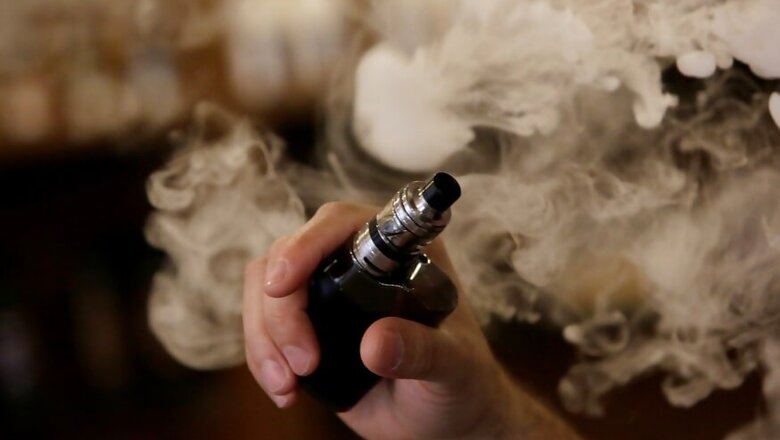
views
“Equating smoke-free products (like vapes) with cigarettes only serves to protect the stranglehold of cigarette trade on the world’s nicotine users” and “will nullify the potential of modern tobacco harm reduction strategies,” said British medical journal, Lancet, in a comment.
Noting that the rapid-rise of smoke-free nicotine products, especially vaping had been the most disruptive influence on smoking in decades and had challenged tobacco’s stranglehold on the nicotine market, it added that the WHO, in its report on the Global Tobacco Epidemic, 2019 “continues to underappreciate the potential of low-risk alternatives to smoking.”
Earlier in May, the Indian Council of Medical Research (ICMR) had recommended a complete ban on e-cigarettes and other electronic nicotine delivery systems (ENDS) in India reasoning that it “adversely affects almost all the human body systems with impact…from womb to tomb”.
The article in the British medical journal argues that “Vaping and other smoke-free products have the potential to reduce the enormous harm of smoked tobacco products. The stakes of getting policy responses to smoke-free products wrong are high, especially if such restrictions stop millions of the world's smokers accessing safer alternatives. It is disappointing that in its latest tobacco report, WHO clings to outdated orthodoxy when it could embrace innovation.”
The comment in the Lancet has been written by Robert Beaglehole, the Emeritus Professor at the University of Auckland and former director of chronic disease, Clive Bates of Counterfactual Consulting Limited in London along with Ben Youdan and Ruth Bonita of the University of Auckland.
A key concern flagged by the ICMR, and agencies including the USA Food and Drug Administration (FDA) was the ‘epidemic’ of youth vaping. The Lancet article, however, points out that the widely reported survey that one in five US high school students had used e-cigarettes in the past 30 days when surveyed last year shows just part of the picture.
A detailed examination showed that 72% were not regular vapers, but “experimental and occasional users,” it says, adding, “Since most regular US youth vapers have also used other tobacco products, it raises the prospect that vaping might be a gateway out of, not into, tobacco use. In the UK and New Zealand, where youth e-cigarette use is also measured, prevalence of vaping in the age groups surveyed shows e-cigarette use by never smokers is less than 0.4% in both countries.”
The ICMR had also flagged the possibility of non-smokers turning to smoking. “Use of ENDS or e-cigarettes by non-smokers can lead to nicotine addiction and regular smoking,” it said and added that several studies have found that youths using ENDS or e-cigarettes were “more likely to use regular cigarettes later.”
In the Lancet article, the authors admit that the “long-term health implications of vaping cannot be known for certain for decades”, but added, “evidence on the toxicology of aerosols and human exposure to toxins informs judgments about the likely effects of vaping” and that estimates suggest that “the risks of vaping are unlikely to exceed 5% of those associated with smoked tobacco products."
“People smoke cigarettes for the nicotine but die from the tar,” noted the article, while adding that although nicotine replacement therapy (NRT) has been available since 1978, its success rates are low.
“The key to the public health impact of vaping will be the willingness of more smokers to switch the way they use nicotine rather than to quit completely. Vaping meets the needs of some ex-smokers by substituting physical, psychological, social, cultural, and identity-related aspects of tobacco addiction…This suggests that vaping is a viable long-term substitute for smoking, with substantial implications for tobacco harm reduction.”
“Invoking the precautionary principle,” said the Lancet, would prevent the use of smoke-free products and would be “unjustified in the face of the massive burden of smoked tobacco products, which are ubiquitously available.”
“The policy response to smoke-free products has to be different from existing tobacco control strategies, which include tax increases, advertising bans for cigarettes, and upstream restrictions on supply.
Instead, policy priorities for smoke-free products should be to exempt them from excise taxes to maintain a fiscal incentive to switch; control rather than ban marketing to allow smoke-free products to challenge the dominance of the cigarette; provide public education campaigns on harm minimisation; not force vapers to share smoking areas; and support use of smoke-free products as a quit aid,” it said.



















Comments
0 comment